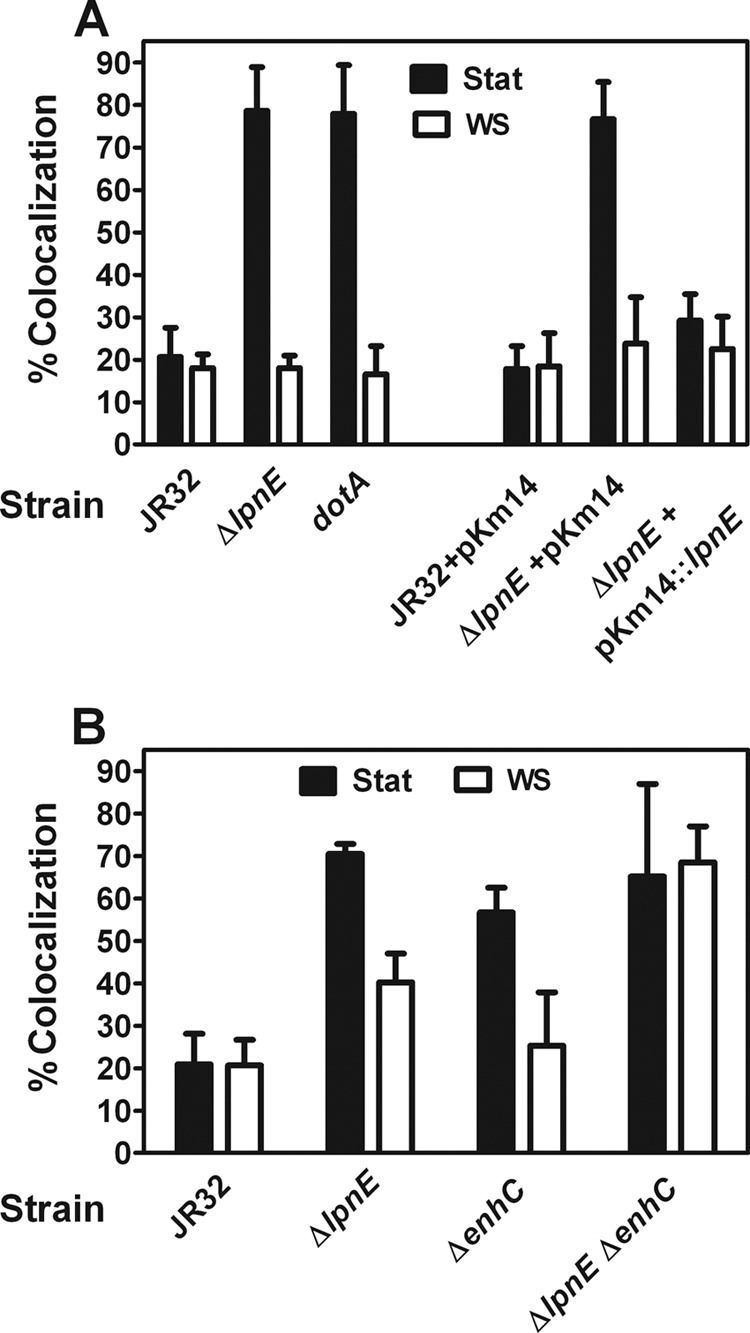Fig 2.

Analysis of vacuole acidification phenotype in macrophages. (A) WS treatment reverses defective ΔlpnE strain vacuole acidification. J774 macrophages were infected at 37°C and an MOI of 50 with stationary-phase (Stat) or WS-treated bacteria expressing GFP. Colocalization with LysoTracker red was calculated as a percentage of internalized bacteria. On the left, it can be seen that colocalization is increased for Stat bacteria and reversed by WS treatment. P < 0.001 for JR32 versus the ΔlpnE mutant. Colocalization is no different from that of a dotA mutant. P = 0.90 for the dotA versus the ΔlpnE mutant. WS treatment reverses the colocalization defect. For Stat versus WS-treated bacteria, P < 0.001 for the ΔlpnE mutant and P < 0.001 for the dotA mutant. On the right, it can be seen that complementation with plasmid pKm14 restores parental colocalization. For Stat bacteria, P < 0.001 for ΔlpnE pKm14 versus ΔlpnE pKm14∷lpnE. (B) EnhC is required for WS reversal of defective ΔlpnE strain vacuole acidification. J774 macrophages were infected at 37°C and an MOI of 50 with Stat or WS-treated bacteria expressing GFP. Colocalization with LysoTracker red was calculated as a percentage of internalized bacteria. WS treatment of ΔlpnE and ΔenhC strains reverses defective colocalization. For Stat bacteria, P < 0.001 for JR32 versus the ΔlpnE mutant and for JR32 versus the ΔenhC mutant. For Stat versus WS-treated bacteria, P < 0.001 for the ΔlpnE mutant and P = 0.001 for the ΔenhC mutant. WS treatment of the ΔlpnE ΔenhC double mutant fails to reverse the entry defect. For Stat bacteria, P < 0.001 for JR32 versus the ΔlpnE ΔenhC mutant. For WS-treated bacteria, P < 0.001 for JR32 versus the ΔlpnE ΔenhC mutant.
